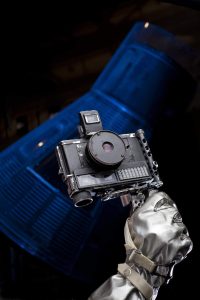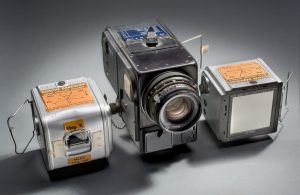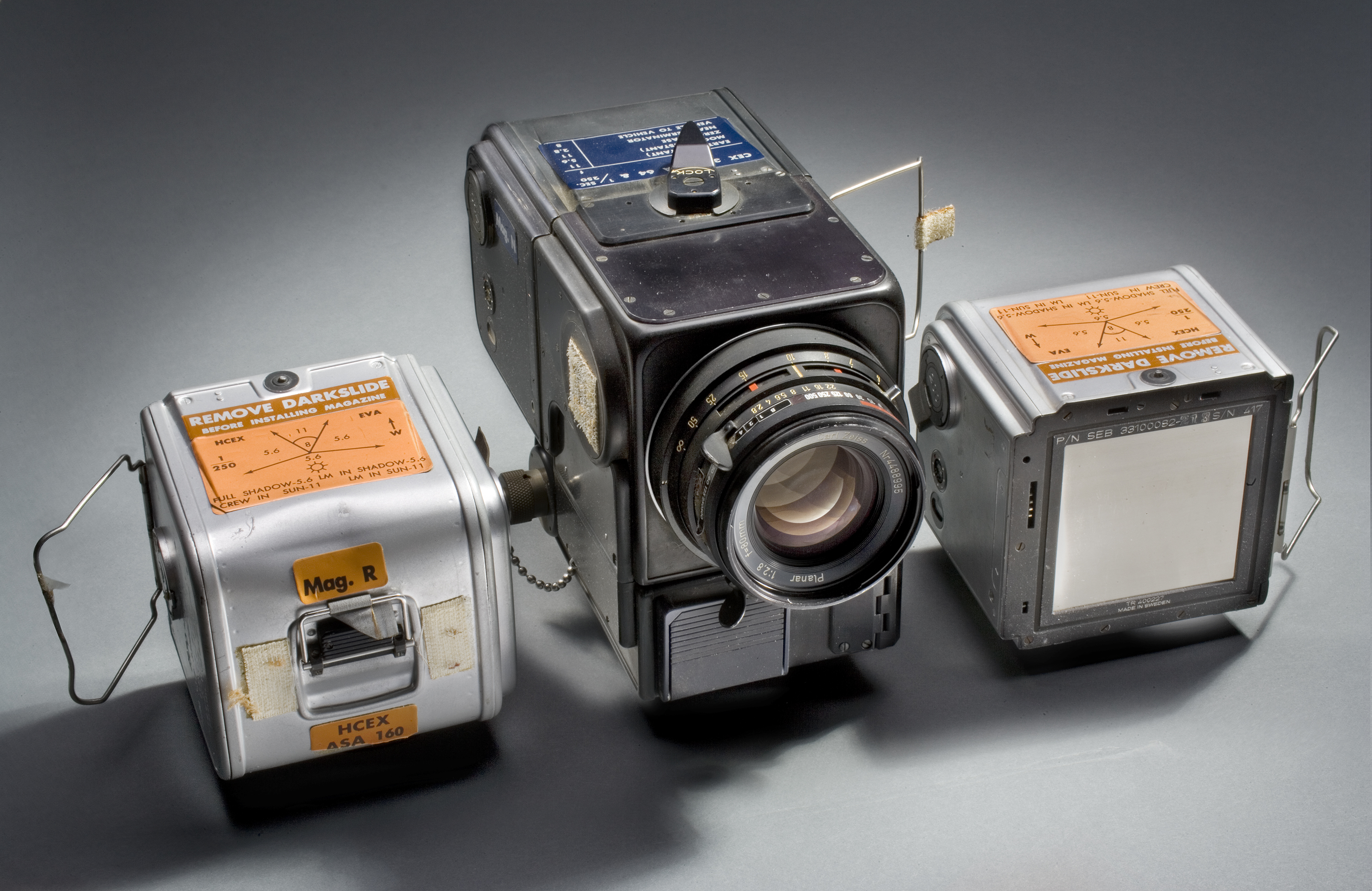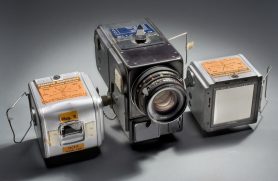
Ever since John Glenn brought up a heavily modified ANSCO Anscoset 35mm camera into space on board the Friendship 7 space craft during the Mercury-Atlas 6 mission, NASA has continued to look for ways to bring cameras into outer space.
The idea of taking photos in space doesn’t really sound like much of a challenge. Take a camera, put it on a spaceship, and you’re done, right?
Well, in order to go into outer space, you need space suits. Space suits are large, clunky devices meant to protect astronauts from the horrors of sub zero temperatures, radiation, and a lack of a rather important gas, oxygen. Space suit gloves are not very good at manipulating the small levers and knobs that most cameras have, so the cameras need to be modified with much larger controls so that they may be used by the astronauts in space.
What’s the big deal you ask? Modify the cameras with larger knobs and levers, and now you can take photos in space, right? Well yes, technically, but there’s still many other challenges as this article from the August 1969 issue of Popular Photography magazine explains in great detail.
For the Apollo missions, NASA had chosen Hasselblad as the camera of choice for the Apollo 8 and 9 missions. One being a modified 500C and the other a 500 EL. This was an excellent marketing tool for Hasselblad as they could proclaim that their cameras were truly “out of this world”, but the cameras you could buy on Earth at a camera store were not at all like those in outer space.
Tactile controls had to be changed, reflex mirrors removed, leaf shutters installed, the viewfinder was a large wire frame finder attached to the top of the camera, and the only means of focus was zone focus. Shutter speeds were limited to 1/125 to 1/500, which in the dim light of outer space meant the lenses had to be shot nearly wide open for proper exposure, making depth of field on closeups frustratingly small.
Should we train astronauts to be photographers, or should we take photographers and train them to fly spacecraft?

For all of the benefits of bringing cameras up in a space capsule and shooting images out of a small window, the resolution of the 120 roll film and 70mm film used wasn’t nearly enough for proper moon mapping, something the article hoped would be addressed in later missions.

It’s worth noting that although this article was published in August 1969, after the success of Apollo 11, it was written in the months before it, with no knowledge of the cameras used on that mission but now we know that Hasselblad had an important role there as well.
This article is a bit of a long read that gets somewhat technical, but it helps illustrate the challenges of shooting photos in outer space in those early days. In hindsight, I’m happy that NASA continued to work with Hasselblad and other companies like Nikon to further improve space photography, but it certainly wasn’t easy!
All scans used with permission by Marc Bergman, 2019.



If I recall, there’s a Hasselblad in earth orbit, accidentally released by one of the Apollo crew.
No, not Apollo. That was Michael Collins who had one slip away from him during a Gemini 10 EVA. Although, obviously, later he was also the Apollo 11 CMP. I have no idea if it’s still in orbit or if it decayed and burnt up during re-entry. I wonder if it’s still up there.
That would be my guess. Even in space, Earth’s gravity pulls things in and something like a camera would have likely burned up in the atmosphere years ago. Still, it’s fun to think that a Hasselblad could be up there all these years, watching us!
Very interesting as usual Mike. My Hasselblad rubbed me the wrong way. The nicest camera I couldn’t wait to get rid of. I could hardly operate mine in street clothes.